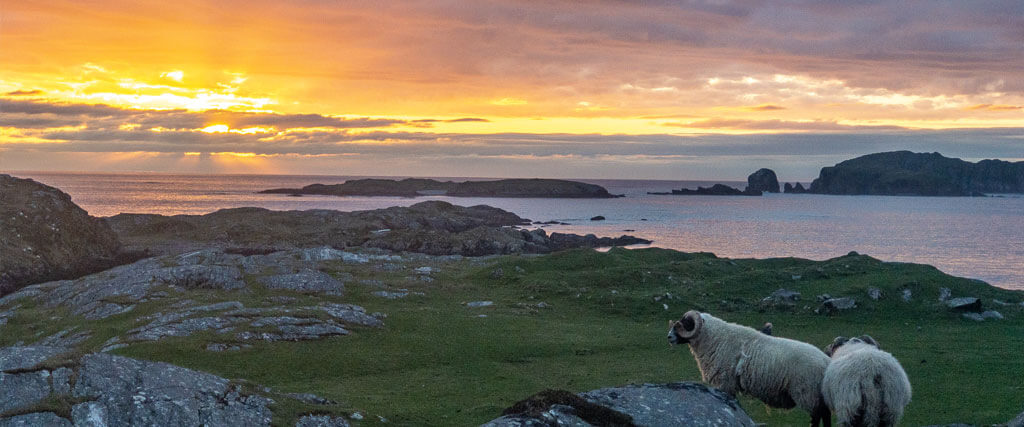GREAT BERNERA

The island's name Great Bernera is named ‘Great’ to differentiate it from ‘Little’ Bernera, a smaller island to its north. However nowadays, most people refer to Great Bernera as simply, Bernera. The island's name is Norse in origin and is thought to have been derived in honour of Bjarnar, father of the Norse Chieftain of Lewis Ketil Bjarnarson. (Bjarnar is the Old Norse word meaning bear). The vast majority of placenames on Bernera are similarly Norse, implying extensive Viking settlement here.
Bernera is eight square miles in size – approximately five miles long by three miles wide. The district of Bernera covers the area of Tir Mor, Bernera and several outlying islands including the beautiful Little Bernera. Tir Mor includes the villages of Iarshader, Crulivig, Lundale and Linshader which lie to the south side of the bridge and are part of the Grimersta Estate, while Bernera includes the villages of Hacklete, Breaclete, Barraglom, Kirkibost, Tobson, Bosta and Croir.
The land is divided into croft land, in-byes and common grazing which were once the bed rock of a thriving community of crofting and fishing townships. During its heyday, Bernera reached a population of over 1200 residents. However, as with many parts of the Highlands and Islands, it witnessed extensive emigration periods, sometimes enforced by landlords and other times because of economic necessity. By 1951, the population had reduced to about 380, and today the number of residents living on Bernera sits at roundabout 250.
BERNERA THEN AND NOW

Back in the day, keeping livestock and working the land and sea were a way of life and in some cases provided islanders with a good bounty – records show that in 1827 alone, some 60,000 lobsters were sent to London from Bernera! Communities were close-knit and shared the workloads, passing their skills and traditions down through the generations; and in these days, storytelling, song, dance and religion were very much part of community life.
Visible reminders of this bygone era can still be seen within the landscape in the forms of overgrown lazy beds; old peat embankments and shielings; stone dykes and lobster ponds; ruined chapels; a cairn to commemorate the Bernera land struggle, and a memorial to the men who lost their lives in the Great War. And delving further back into Bernera’s history, remains of a Norse mill, an Iron Age house, ancient Standing Stones and a ruined Dun show, how throughout history Bernera attracted settlers from near and afar, making for an island rich in history, culture and heritage.
Today on Bernera, although not as predominant as it once was, Gaelic remains the native language and still flourishes amongst many of the villagers. Nowadays only a few crofters keep livestock, and fewer still work the land. However, in the last decade a renewed interest has taken place with new incentives and croft diversification schemes, merging the traditional ways with modern - perhaps crofting will become a viable way of life again. Meanwhile, the fishing industry continues at a small scale, while salmon and mussel farms provide jobs, and tasty produce, from the pristine waters of Loch Roag. Many residents work in Stornoway, while others make a living working remotely from home; in the catering and care industry; renting holiday accommodation or as artists, craftsmen and tradesmen.


The demographics of Bernera are changing too, and while many of its residents are of an older generation, the last few years have seen the return of a few natives and a steady influx of younger age groups from as far afield as Australia, South Africa, North and South America and Germany. Many settle here seeking a simpler and slower way of life, others are drawn to its heritage and beauty. These same attributes have placed Bernera firmly on the map as a favourite holiday destination for many visitors each year.
GET IN TOUCH
Contact Us
Privacy Notice
